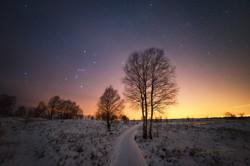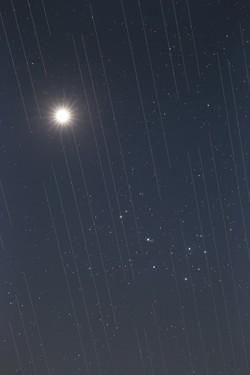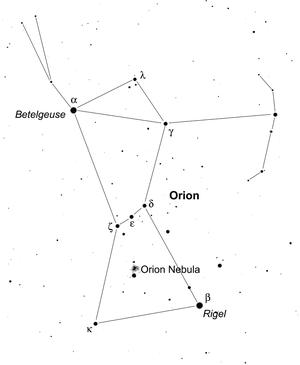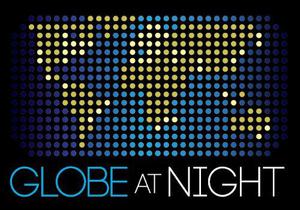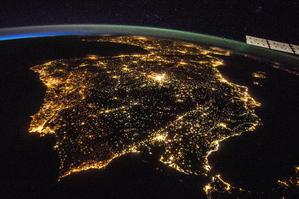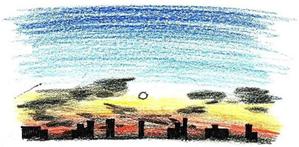Glossary term: Light Pollution
Description: Light pollution is the presence of excessive or defective (emitted in a direction above the horizon) artificial lighting, such as streetlights, that causes the brightening of the night sky. This is inappropriate as it disrupts the observation of stars, planets, and other astronomical objects, and changes ecosystems and many natural cycles that affect living beings. Furthermore, light pollution is also an inefficient use of finances and resources.
Related Terms:
See this term in other languages
Term and definition status: This term and its definition have been approved by a research astronomer and a teacher
The OAE Multilingual Glossary is a project of the IAU Office of Astronomy for Education (OAE) in collaboration with the IAU Office of Astronomy Outreach (OAO). The terms and definitions were chosen, written and reviewed by a collective effort from the OAE, the OAE Centers and Nodes, the OAE National Astronomy Education Coordinators (NAECs) and other volunteers. You can find a full list of credits here. All glossary terms and their definitions are released under a Creative Commons CC BY-4.0 license and should be credited to "IAU OAE".
Related Media
Starry Night over Eifel national park, by Dong Han, China
Credit: Dong Han/IAU OAE
License: CC-BY-4.0 Creative Commons Attribution 4.0 International (CC BY 4.0) icons
Real Light Pollution Panorama, by Tomáš Slovinský, Slovakia
Credit: Tomáš Slovinský/IAU OAE
License: CC-BY-4.0 Creative Commons Attribution 4.0 International (CC BY 4.0) icons
Satellite swarm versus night sky beauty, by Torsten Hansen, Germany
Credit: Torsten Hansen/IAU OAE
License: CC-BY-4.0 Creative Commons Attribution 4.0 International (CC BY 4.0) icons
Related Activities
How Light Pollution Affects the Stars: Magnitude Readers
astroEDU educational activity (links to astroEDU website) Description: Build a Magnitude Reader to explore the magnitude of stars.License: CC-BY-4.0 Creative Commons Attribution 4.0 International (CC BY 4.0) icons
Tags: Hands-on , Dark skies , ecology Age Ranges: 10-12 , 12-14 , 14-16 , 16-19 Education Level: Middle School Areas of Learning: Modelling , Observation based Costs: Medium Cost Duration: 1 hour Group Size: Group Skills: Asking questions , Planning and carrying out investigationsGlobe at Night Activity Guide
astroEDU educational activity (links to astroEDU website) Description: Learn to observe and record the faintest visible stars to measure the light pollution.License: CC-BY-4.0 Creative Commons Attribution 4.0 International (CC BY 4.0) icons
Tags: Hands-on , Dark skies , ecology , Citizen science Age Ranges: 4-6 , 6-8 , 8-10 , 10-12 , 12-14 , 14-16 , 16-19 , 19+ Education Level: Informal , Middle School , Other , Primary , Secondary , University Areas of Learning: Observation based , Project-based learning Costs: Low Cost Group Size: Group Skills: Communicating information , Planning and carrying out investigationsHow Many Stars Can You See at Night?
astroEDU educational activity (links to astroEDU website) Description: Investigate the effects of light pollution on night sky observation.License: CC-BY-4.0 Creative Commons Attribution 4.0 International (CC BY 4.0) icons
Tags: Software , ecology , Observation of sky , Pollution , Constellations , stellarium Age Ranges: 12-14 Education Level: Middle School Areas of Learning: Observation based , Social Research Costs: Low Cost Duration: 45 mins Group Size: Group Skills: Analysing and interpreting data , Communicating information , Planning and carrying out investigationsEvening Sky Watching for Students
astroEDU educational activity (links to astroEDU website) Description: Let's observe the evening sky with the naked eyeLicense: CC-BY-4.0 Creative Commons Attribution 4.0 International (CC BY 4.0) icons
Tags: Art , Observation of sky , Sky watching , Motion of star Age Ranges: 4-6 , 6-8 Education Level: Pre-school , Primary Areas of Learning: Discussion Groups , Observation based , Social Research Costs: Free Duration: 30 mins Group Size: Group Skills: Asking questions , Communicating informationLet there be light… but not too much!
astroEDU educational activity (links to astroEDU website) Description: Build a model to learn what light pollution is and what its effects are.License: CC-BY-4.0 Creative Commons Attribution 4.0 International (CC BY 4.0) icons
Tags: Pollution , sky observation , lighting source Age Ranges: 6-8 , 8-10 , 10-12 Education Level: Middle School , Primary Areas of Learning: Discussion Groups , Modelling , Observation based , Project-based learning Costs: Medium Cost Duration: 2 hours Group Size: Group Skills: Asking questions , Developing and using models , Engaging in argument from evidence